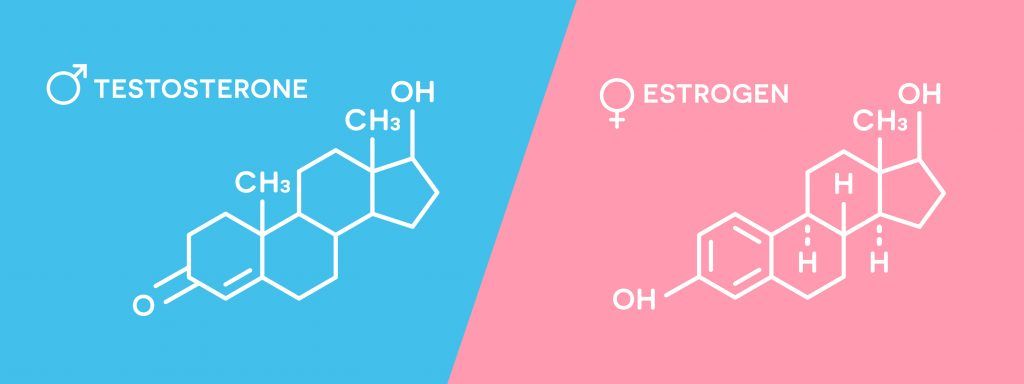Guide to Medication for Those Transitioning
People who are transgender have a different gender identity than the one they were assigned at birth. Some people may not identify as male or female, but for this guide, the focus will be on male-to-female and female-to-male transition medications. (Learn More: How Hormonal Transition Treatments Start) As with all medical decisions and treatments, those who are able to start treatment for the transition process may have to deal with side effects. (Learn More: Are There Side Effects to Medications or Transitioning Treatments?) Depending on what you choose, your transition may involve steps other than hormone therapy and medication. (Learn More: Are Medications the Only Step in Transitioning?)
Steps Taken Before a Medical Transition
Transitioning begins before receiving hormones or medications of any kind. First, you will likely have to talk to a psychologist per guidelines set by the World Professional Association for Transgender Health (WPATH). A psychologist will then diagnose you with gender dysphoria, also known as gender incongruence. This is not considered a mental illness, but it is a confirmation of stress felt by those whose assigned gender does not match their gender expression. A therapist then writes a letter of recommendation for those eligible to start hormone therapy. At that point, you may choose to live as the gender you identify as (if you weren’t already doing so), and you may decide to start researching surgery options as well.
How Hormonal Transition Treatments Start
Hormones are the main medications used during the transition phase. The process and changes seen are gradual. Many factors can influence how quickly they work for each patient, such as:
Current health status
Age at which you begin taking hormones
Genes
The University of California San Francisco’s Center for Excellence for Transgender Health says that a transition should be seen as a “second puberty.” It can take a few years to see and feel the results of hormone therapy. Everyone is different, so dosages and medications vary by patient. The goal of hormone therapy is gender congruence, ensuring that your exterior gender characteristics match your gender identity.
Male-to-Female (MTF) Transition
Called feminizing hormone therapy, these medications block testosterone and allow you to look more traditionally female.

Starting this therapy at a younger age may prevent changes in your voice’s pitch and the amount of body hair you grow. Younger patients may start hormone therapy around age 16. Hormone therapy can be done alone or along with surgery. Not every transgender woman will choose or be eligible for feminizing hormone therapy and/or surgical procedures. Male-to-female hormone therapy typically follows these steps:
Blocking the production of testosterone: Aldactone, the brand name for the medication spironolactone, impedes androgen (male sex hormone) receptors, which stops the secretion of testosterone. You might take this medication in doses of 100 to 200 milligrams for anywhere from six to eight weeks. Side effects include increased urination, increased production of potassium, and dizziness.
Taking estrogen: This hormone stimulates the development of traditionally female attributes and may cause emotional side effects. Estrogen is available as:
Pills. Though estrogen pills are known to be safe for most users, they can be risky for women who smoke or are over age 35.
Patches. These are also safe, but they can cause skin irritation and must be worn continuously.
Injections. More data is needed about the effects of the higher levels of estrogen in injections. For that reason, the lowest effective dose should be used. Side effects can be more pronounced than with other methods.
Side effects. Erectile dysfunction, reduction in sex drive, and improper ejaculation are potential side effects of estrogen. Mood swings, weight gain, and hot flashes are also common. Your doctor will check your liver, cholesterol, and sugar levels to prevent the development of diabetes.
Taking progesterone: Available as a pill or cream, progesterone is often used to assist women with pregnancy, among several other uses. Not all doctors agree that transgender women should take it, but some patients say it improves their libido, mood, body-fat redistribution, and breast development.
Transgender women who have had surgery to remove their testes will have the dosage of their medication lowered because they will not need as much estrogen to maintain traditionally feminine features.
Female-to-Male (FTM) Transition
Transgender men take testosterone to develop traditionally male characteristics. This may be used alone or along with surgery.

The goal of testosterone hormonal therapy is to promote changes that allow you to take on characteristically male attributes. These include:
Physical changes.
These include the redistribution of fat and muscle, skin thickening, and increased oil production, and changes to your face, such as a more angular appearance. The smell of your sweat and urine usually change as well. Testosterone may deepen your voice, but some transgender men have to practice speaking with vocal techniques or get help from a speech therapist. Hair changes include increased thickness and growth rate, as well as facial hair.
Changes in libido. You may become more easily aroused. The clitoris generally enlarges as well, and sensations may change during orgasms.
Emotional changes. Your behavior, hobbies, and interests may change, or you may change the way you manage current relationships.
Reproductive system changes. It is still possible to become pregnant if you are a transgender man, but your chances of conceiving decrease during and after hormone therapy. Your periods will change. Some transgender men report shorter, lighter periods. Others mention that periods become heavier until they end with menopause.
Side effects of testosterone therapy include:
An increased risk of ovarian cancer. More data is needed to establish this link, but doctors may recommend a hysterectomy (surgical removal of the uterus and ovaries) to decrease the likelihood of developing ovarian cancer.
Changes in risk profile. Men have shorter lifespans than women, and they are more likely to develop high cholesterol, high blood pressure, diabetes, and heart disease. More research is needed to see if these risks increase for transgender men to the same levels as cisgender men.
Rates of Gender Confirmation Surgeries and Hormone Therapy
There is scarce data about the number of transgender people who are undergoing hormone therapy. However, we do know a bit more about the number of people who have had gender confirmation surgery.
Between 2015 and 2016, the number of gender confirmation surgeries rose in the United States by about 20%.
The Affordable Care Act removed provisions that allowed insurance companies to discriminate against patients based on their gender, which made it easier to get certain procedures covered by insurance.
Medicare also removed a prohibition that previously prevented gender confirmation surgery coverage.
Gender reassignment surgeries can include:
“Top surgery,” or male chest reconstruction to remove breast tissue and reshape the chest area for transgender men

Breast implants for transgender women
Facial contouring surgeries
“Bottom surgery”
For FTM: This involves testicular implants or using an enlarged clitoris (metoidioplasty). A graft may be used to create a penis (phalloplasty).
For MTF: Vaginoplasty allows a vagina to be created using existing bodily tissue.
Frequently Asked Questions
What medications are used for those who are transitioning? Hormones are the most commonly used medications for people who are transitioning. Transgender men take testosterone to develop traditionally male features, such as more angular features, redistribution of body fat, changes to muscle mass, and facial hair. Some men will find that their voices change, but others may need vocal practice or additional help to develop a deeper pitch. Transgender women are given estrogen so they can develop female characteristics, such as body-fat distribution, a decrease in facial and bodily hair, and, possibly, breast development. In some cases, transgender women may be given progesterone to improve their mood and libido. Are there any side effects of hormone therapy? Yes; transgender women may gain weight, have mood swings, and experience hot flashes during therapy. You will be monitored to ensure your liver is healthy, to prevent diabetes, and to ensure you do not have excess potassium in your blood. Transgender men begin to develop similar risk factors that affect men, such as a higher risk of developing heart disease, high blood pressure, and higher cholesterol levels. Does the transition process end with hormone therapy? Not necessarily. Some transgender people are eligible for surgeries, such as breast implants, facial reconstructions, or vaginoplasty for transgender women. Transgender men may decide to get chest reconstruction surgery to remove breast tissue. They have several options that allow them to have a penis, such as a phalloplasty or metoidioplasty.
References
Here’s How Sex Reassignment Surgery Works. (February 2015). Washington Post.
Information on Estrogen Hormone Therapy. (2019). UCSF Transgender Care.
Feminizing Hormone Therapy. (October 2017). Mayo Clinic.
Information on Testosterone Hormone Therapy. (2019). UCSF Transgender Care.
What Do I Need to Know About Transitioning? (2019). Planned Parenthood.
Transgender Facts. (September 2017). Mayo Clinic.
What to Expect From Gender Confirmation Surgery? (December 2018). Healthline.
Gender Confirmation Surgery Is on the Rise in the U.S. (May 2017). TIME.
Gender Dysphoria. (April 2016). National Health Service.
Progesterone. (April 2016). MedlinePlus.

Related Articles

The Acne Medication Playbook: From Drugstore Staples to the Nuclear Option Doctors Save for Last
Acne is not just a teenage problem it's a...

Understanding High Cholesterol: Symptoms, Risks, and Treatment Options
High cholesterol, or hypercholesterolemia, affects nearly...

Understanding Anxiety: Symptoms, Treatments, and Medications
Anxiety disorders are among the most prevalent...

The Dark Side of Slimming Down: A 100-Year Journey of Weight Loss Drugs
Weight loss drugs have long occupied a complicated...
